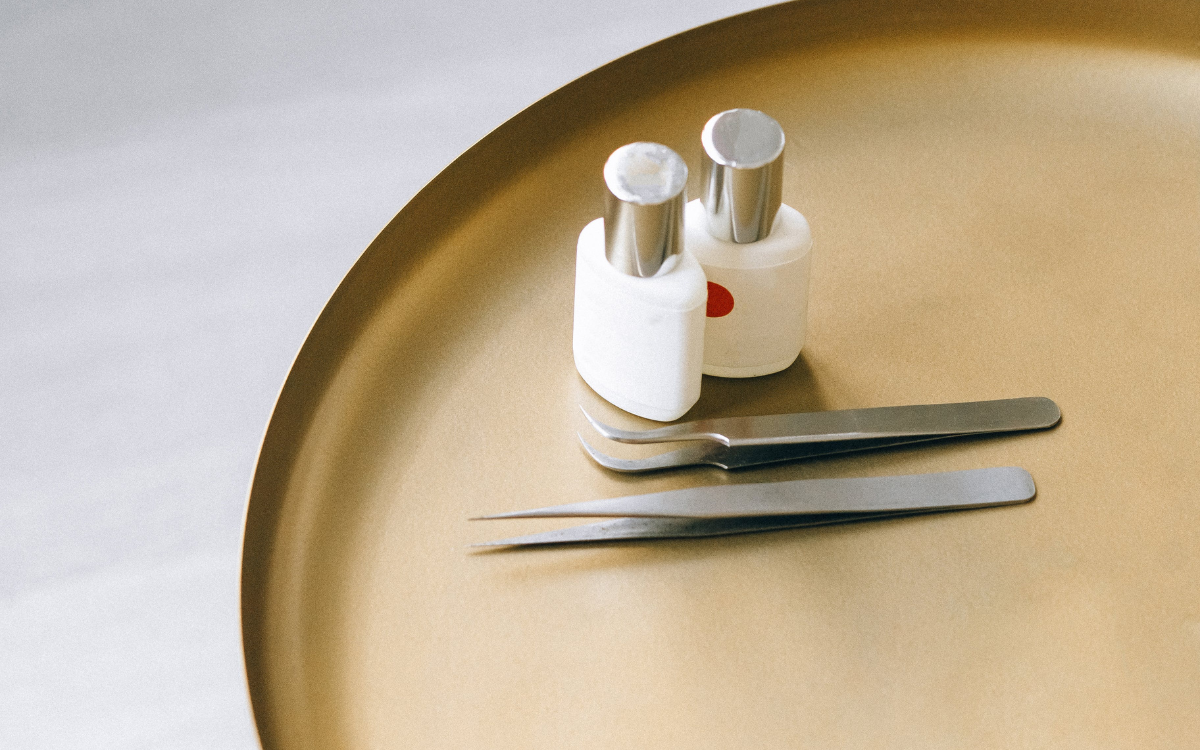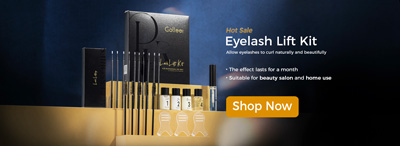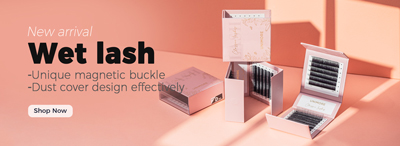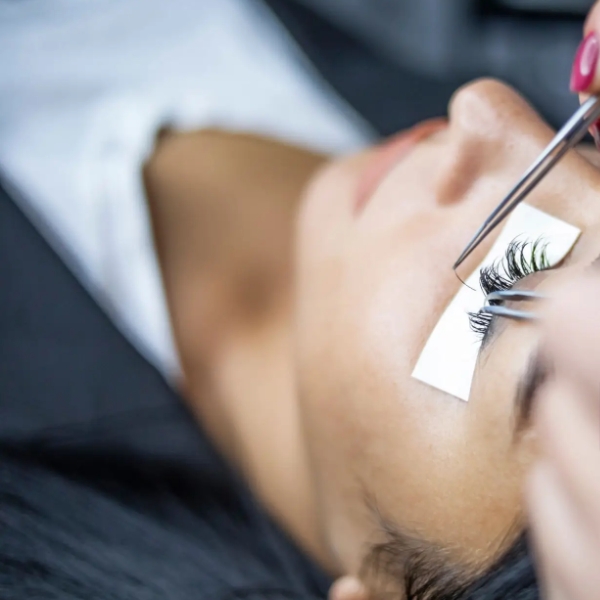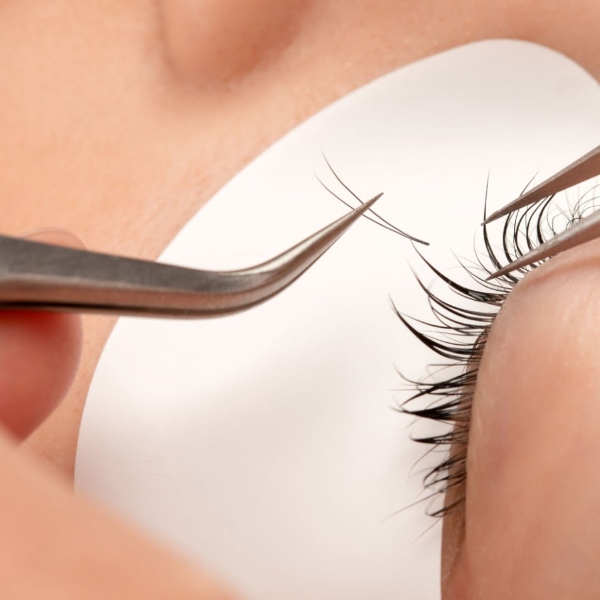Summer. It is the time of year when we anticipate the moment that it will end, whether it be the longer evenings, the feeling of warmth from the sun on our skin, or barbecues… Despite this, there are a few disadvantages associated with the rising temperatures and the subsequent rise in humidity that we frequently experience. The most significant disadvantage is that our lash glue suddenly forgets how to act properly. Undoubtedly, even the best glue for eyelash extensions can be temperamental and respond to even the smallest changes in its surrounding environment.
Most lash artists underestimate the importance of humidity when laying the groundwork for applying eyelash extensions that will last for a significant amount of time.
The performance of your lash glue may change depending on the season if you live in an area that experiences a change in weather regularly.
Variations in temperature and humidity can be the difference between a great set and the set that makes you never want to look at a single eyelash again. Your room conditions are among the most important factors affecting your lash glue. (we all have them – hang in there).
It could be argued that temperature is the factor that has the greatest impact on our awareness; to put it another way, we are more likely to take note of a change in temperature of two degrees than a change in humidity of five percent. What is the most common response that we have when the temperature rises? Calm it down a bit. When you turn on the air conditioner, it will pull the moisture out of the air, which will cause your glue to dry more slowly. On the other hand, opening a window to let in a breeze will likely increase the humidity in the room, which will cause your glue to dry more quickly; however, turning on the air conditioning will cause your glue to dry more slowly.
The adhesive application in dry climates or seasons can look and feel very different from its use in more humid environments. Read this post if you are sick of getting messages from your customers complaining about their low retention rates whenever the seasons change.
- 1 How exactly does lash adhesive do its job?
- 2 The Most Effective Storage Solutions
- 3 What kind of effects does humidity have on the glue used for eyelash extensions?
- 4 What kind of an effect does humidity have on the rate at which the lash glue dries?
- 5 The ideal level of humidity for the application of eyelash extensions
- 6 How to bring the humidity level down in the room
- 7 What happens to the glue used for lash extensions when the humidity is low?
- 8 How to make the humidity in the room higher
- 9 Does temperature play a role as well?
- 10 Final Thoughts
How exactly does lash adhesive do its job?
Because cyanoacrylate, the primary component of lash adhesive, is an acrylic resin that rapidly polymerizes (cures) with water in the air, the lash adhesive does not “dry,”; rather, it cures. This is because cyanoacrylate is the main component of lash adhesive. (humidity). As soon as the adhesive liquid comes into contact with the water vapor in the air (humidity), this results in the formation of a thin skin within seconds, which in turn slows down the reaction.
Because of this, it is essential to apply only a very thin layer of adhesive; doing so will ensure a rapid reaction, which in turn will produce a secure bond. It may take anywhere from 12 to 24 hours for the adhesive to become waterproof after the curing process, at which point it can be safely exposed to other water sources like showers, saunas, and so on.
Humidity
As mentioned earlier, the curing process for lash adhesive begins as soon as it comes into contact with moisture in the air (humidity). It must be exposed to the appropriate amount of moisture (as well as heat) in the atmosphere. The integrity of the adhesive will be compromised if either too much or too little water is used. Maintaining a temperature and humidity level within the ranges recommended by your adhesive will ensure the best possible working conditions.
If your adhesive dries out too quickly, you might find that your extensions become brittle and fall off your natural lashes with a “ping.” This indicates that there is an insufficient amount of water in the air. When this happens, a nano-mister will become your best friend because it will assist in correctly curing the lash adhesive.
If your adhesive dries abnormally slowly, it will become “gloopy” and may cause “stickies” to form. This indicates excessive water in the air, which can reduce the adhesive’s overall strength. When this happens, a dehumidifier will become your best friend in properly curing the lash adhesive.
Temperature
Because humidity and air temperature are used in the curing process, it is equally as important to work in the appropriate temperatures as it is to have the appropriate humidity during the curing process.
When working at temperatures too high, the reaction to become solid takes longer. The adhesive will quickly thicken, but it will not be set once it is applied. It is the first sign that the adhesive is not fresh and will need to be replaced if it takes excessive time for the adhesive to set.
The Most Effective Storage Solutions
- Always remember to store your adhesive bottle in a cool, dark place. Store moisture on the adhesive in a jar filled with rice (or moisture beads) to prevent moisture from forming. Remember to replace the rice whenever you get a new bottle!
- Place bottles that have not been opened in the refrigerator. Once the bottle has been opened, storing it in the refrigerator or another cool, dark place is the best way to prevent condensation.
What kind of effects does humidity have on the glue used for eyelash extensions?
Cyanoacrylate is the primary component of all eyelash glues, which is why it is essential to all eyelash extension glues. This component ensures the eyelash glue dries quickly and keeps the extensions in place for several weeks.
However, cyanoacrylate will not harden until moisture is present in the environment. To put it another way, humidity acts as an “activator” for the adhesive properties of lash extension glue.
What kind of an effect does humidity have on the rate at which the lash glue dries?
Manufacturers of lash glue, such as ourselves, can control the drying time of lash extension glue by adjusting the proportion of cyanoacrylate and a few other hardening agents in the mixture. Their glue’s drying time can be either extremely quick or slow, depending on the manufacturer’s preferences.
For instance, a glue that dries in one second, such as Mach glue, has a significantly higher concentration of cyanoacrylate than a glue that dries in four to five seconds.
The humidity in the room should be between 45-60% for any of our lash extension glues to perform at their “intended drying speed” (also known as their advertised drying speed).
The ideal level of humidity for the application of eyelash extensions
If you want your lash extension glue to work properly, the relative humidity in the room should be between 45 and 60 percent. We know that not every region on earth has a humidity level that falls within this range, but you should make every effort to maintain a humidity level in your room between 45-60%.
What happens to the glue used for lash extensions when there is a lot of humidity?
Changes in drying speed in high humidity
Suppose the humidity in the room is higher than the recommended level (above 60%). In that case, the cyanoacrylate in your glue will be “overly activated” because there will be too much moisture in the air. This will cause the lash adhesive to cure and dry much faster than in normal conditions.
A room with a humidity level of over 70% will render the over-activated cyanoacrylate useless and cause poor adhesion.
When there is high humidity, there are more serious issues with lashing
The glue that is dispensed will dry too quickly.
If the humidity in the room is between 45 and 60 percent, a drop of glue that has been dispensed can remain usable for approximately 20 to 30 minutes. On the other hand, if there is a lot of humidity in the air, your glue drop will start drying out more quickly, and by the time you use it, it will already be about half dry. You may still be able to adhere the extension lash to the natural lash, but the natural lash is more likely to fall out sooner.
Insufficient attachment
In high humidity conditions, the adhesive you are using will harden more quickly than the instructions on the bottle indicate it should. The adhesive may partially harden before you can attach the lash extensions, resulting in poor attachment to the natural lash. It will lead to poor retention as a result.
How to bring the humidity level down in the room
If your salon is located in an area with high humidity, the most important thing to do is to work toward bringing the humidity level in your lash room as close as you can to the ideal range of 45–60%.
These actions will be of assistance:
- Use a dehumidifier: dehumidifiers perform a function similar to air conditioners. A fan is used to draw warm and moist air into the dehumidifier. It can remove excess moisture from the air and bring the space’s relative humidity back to where it should be.
- Employ a hygrometer: A hygrometer is an essential piece of equipment for any lash artist’s kit. This handy device displays the temperature and relative humidity of the current environment. Use a hygrometer close to the lash bed at all times to obtain an accurate reading of the humidity level in your workspace.
- Use moisture absorbers: If you cannot invest in a dehumidifier now, you can purchase several moisture absorbers (the same kind you had in your closet) and position them close to where you do your work. Cost-effectively regulating high humidity can be accomplished with the help of this.
- Regular ventilation is important because the moisture in the air, including your and your customer’s breath, can be added by ventilation. Maintain an adequate level of ventilation in the workspace in the intervening time.
What happens to the glue used for lash extensions when the humidity is low?
Everything will move more leisurely if there is not enough humidity. Suppose the relative humidity in the room is lower than the ideal level (greater than or equal to 60%). In that case, the cyanoacrylate in your glue will not have sufficient water vapor to assist in the curing process.
The presence of sufficient moisture is required before cyanoacrylate begins to dry. Suppose there is not enough moisture in the air, also known as dry air. In that case, the lash glue will not be able to be “activated” into a solid, adhesive material necessary for attaching lash extensions to natural lashes. The lash extensions’ glue will continue to be “wet.”
This can lead to several irritating problems, such as “lash stickies,” improper placement, and increased exposure to cyanoacrylate, which may result in an allergic reaction to lash glue.
- Lash stickies: Lash stickies are frustrating when adjacent lash extensions stick to one another. This condition is referred to by the term “lash stickies.” Even if you did a perfect job isolating the lashes at the beginning, the wet glue would still clump to the surrounding lashes if the lash glue doesn’t dry completely before you release the surrounding lashes. This stickiness results from the adhesive taking excessive time to cure while it is being attached.
In addition, your client may also experience a loss of their natural lashes due to the lash stickies if their lashes become stuck together. This loss may be permanent.
- Lashes don’t stick: Have you ever experienced one of those days when your extension lashes just flat-out refuse to stick to your natural lashes? This is almost certainly due to inadequate levels of humidity. When the lash adhesive does not fully cure, the lash extension will simply slip when placed or leaned to one side. You won’t experience that instant, magnetic connection between you.
- Your customer is at a greater risk of developing a glue allergy when the glue doesn’t cure properly because they are exposed to cyanoacrylate for a longer period. If your customer is exposed to the fumes of cyanoacrylate for a longer period, there is a greater chance that they will develop an allergy to the glue.
How to make the humidity in the room higher
- Utilize a Humidifier: A humidifier can increase the amount of water vapor in the air, bringing the humidity level in the lash studio up to 45 and 60%. If you live in a dry area, it is highly recommended that you invest in one.
- Utilize a nano mist spray: If the humidity outside of your salon is still relatively low and/or the air is very dry, then you should consider purchasing a nano mist spray to keep your hair and skin moisturized. The fine mist that it produces helps to hasten the drying process of the glue.
- Make use of a lash extension primer: A lash primer will remove any excess oil from your natural lashes, which in turn will produce a magnetic attachment-like effect when used in conjunction with lash extensions. In an environment with low humidity, you will find that this helps you to speed up the attachment process.
- Utilize an Extension Base because it will speed up the drying time of your glue. Extension Base can be found in most craft stores. It functions similarly to a lash primer, with the exception that it is applied to extension lashes rather than natural ones. It is also known as “glue aid” because it accelerates the drying time of your glue in less-than-ideal environmental conditions, such as low humidity.
Does temperature play a role as well?
Even though humidity is one of the most important factors in the adhesion of lash extension glue, maintaining an appropriate temperature in the room is also very important.
Considering that lash adhesive is a liquid, the temperature affects the viscosity of the lash adhesive.
When the temperature drops, the lash adhesive tends to solidify, just like any other liquid would. Because the viscosity of the “frozen” adhesive is lower (which means it is harder), it will take significantly longer for it to dry.
In contrast, when the temperature rises above a certain threshold, lash adhesive begins to liquefy and behaves as though it is melting. Because the viscosity of the adhesive after it has been “melted” is higher than normal, it will dry at a faster rate than normal.
The application you’re working on might throw you off guard with unexpected shifts in temperature. We suggest keeping the temperature in the room between 22 and 26°C (71 and 79 °F) to ensure excellent retention and consistent results.
Final Thoughts
It is possible to lessen the likelihood of a wide variety of lashroom errors by ensuring that the environment is well-managed and that the humidity level and temperature are kept within the appropriate parameters.
The most effective course of action is to exercise control over your environment, as this will allow you to get the most out of your adhesive and produce eyelash extensions that are both robust and durable.

